March 5, 2021
In the mid-1980s, educator Judi Paul created a program to help motivate her four children to read over the summer months. Word of her program’s success soon spread—and Accelerated Reader was born. To celebrate thirty-five years of AR, we’re taking a look back at the program’s history, starting with this early 1990s video in which Judi herself tells the Accelerated Reader story.
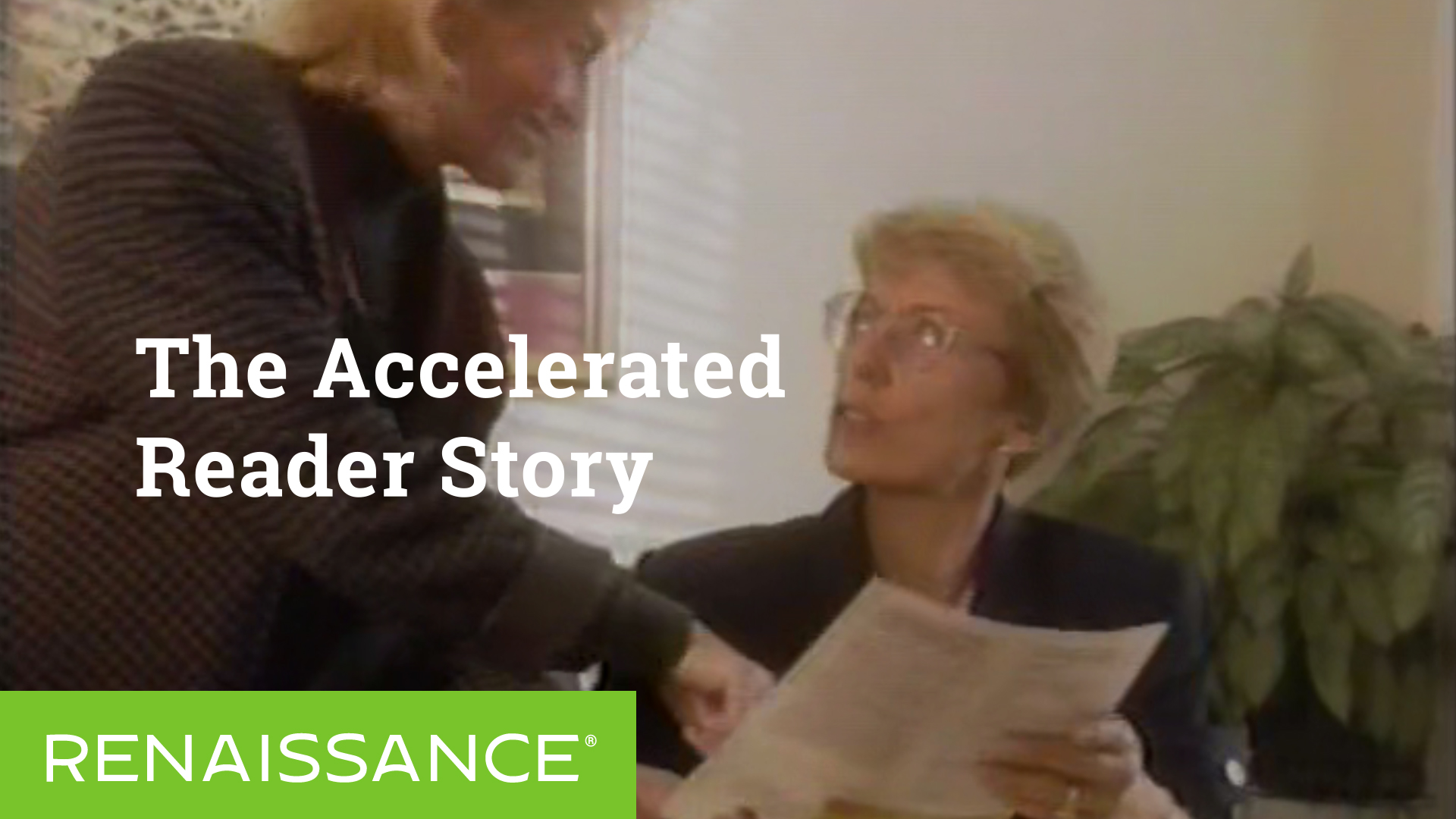
We recently had the opportunity to discuss this video with Ali Good, Director of Product Marketing; Dr. Gene Kerns, Chief Academic Officer; and Kristi Holck, Manager of Content Design. Here are some highlights from our conversation.
Q: What struck you the most as you watched the video?
Ali Good: I’ve always had the idea that Judi avoided the spotlight, but the video shows that she’s a natural speaker. Even if she’d told the Accelerated Reader story hundreds of times before, she absolutely owns that room—the audience is hanging on every word!
I also have to marvel at the fact that she created an edtech start-up in the Midwest in the 1980s, before “start-ups” were even a thing. In a sense, she paved the way for me and other women in edtech, creating the most meaningful piece of educational technology that’s still in use today.
Gene Kerns: Judi definitely had a strong connection with educators, who related to her as both a parent and an advocate for student literacy. They understood where she was coming from, and they recognized that she shared the same goals they did. Judi and her husband Terry were constantly meeting and speaking with teachers and librarians, asking for their input on both the Accelerated Reader software and best practices for using the program.
The video mentions “Advantage Learning Systems,” which was the company’s name at the time, as well as “The Reading Renaissance,” which was the wrap-around professional development on AR Best Practices. Ultimately, the PD was so popular with educators that Judi and Terry changed the company’s name to “Renaissance”—something that’s surely unique in the history of edtech!
It’s also striking that AR’s success was based almost entirely on word-of-mouth, given that Judi launched the program long before websites and social media existed. As she explains in the video, Accelerated Reader was piloted at a Catholic grade school in Wisconsin during the 1985–1986 school year. It was so successful that teachers and librarians at other schools began asking for the program as well—ultimately leading to the launch of the company that fall. It was truly a grassroots effort.
Kristi Holck: I joined the company in 1999, and I remember that Judi would always stop by and say “hello” to the AR Quiz Design Team. I guess this isn’t surprising, since she was the original quiz designer!
While watching the video, I was really interested in her childhood experiences in Iowa, where the arrival of the bookmobile was her favorite part of the month. Before the COVID-19 pandemic, a lot of people probably would have said that access to books isn’t a major issue for today’s students, given the availability of digital reading platforms like myON and Kindle, and the ability to order print books online with a single click. COVID-19 has shown us that we haven’t come quite as far as we think, and that access and equity are still pressing issues in K–12 education.
Q: How has Accelerated Reader changed since 1986?
Gene Kerns: Since the 1980s, technology has changed almost beyond recognition. The computers of the time seem primitive by today’s standards, and the original AR quizzes were delivered on floppy disks, which teachers or librarians had to manually insert into a computer’s disk drive in order for students to take the quiz.
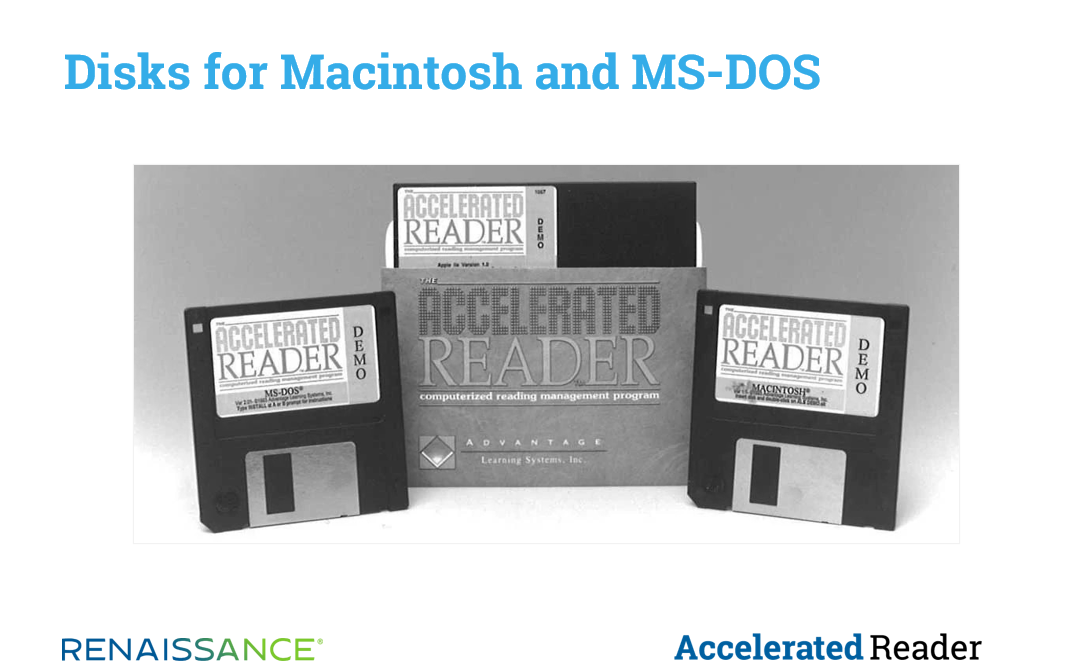
As Judi explains in the video, her husband Terry was an “early adopter” of computers in the 1970s and 80s, and he helped to drive the technical innovation around AR. In the early days, the company also relied on teachers and librarians to send back the AR quiz results. In a good year, we maybe received reading data on 50,000 students.
In 2001, AR was one of the first edtech products to move to the cloud—and this was before “the cloud” was a widely used term. During the 2001–2002 school year, more than three million students used Accelerated Reader, which provided a large database of student reading behavior. Terry saw the value in analyzing this data and sharing insights with educators and parents—he liked to say that when you know better, you do better. This led to the publication of a study called Patterns of Reading Practice, which was a forerunner of today’s What Kids Are Reading report.
Kristi Holck: Accelerated Reader’s content has also expanded dramatically. We now have quizzes on more than 210,000 books—with new quizzes added each week. Along with the Reading Practice Quizzes, which assess literal comprehension, we’ve added a variety of quiz types over the years: Vocabulary Practice, Literacy Skills, and Spanish-language quizzes, along with Recorded Voice Quizzes for early learners.
Needless to say, the quiz-writing process has also changed. In the early years, quizzes were written by hand, and the writers came into the office to type the final version into the quiz entry software program designed by our engineers. As Gene mentioned, quizzes were sent to schools on floppy disks, and schools bought individual quiz collections. Now, when AR quizzes are published, they are immediately available to every school or district.
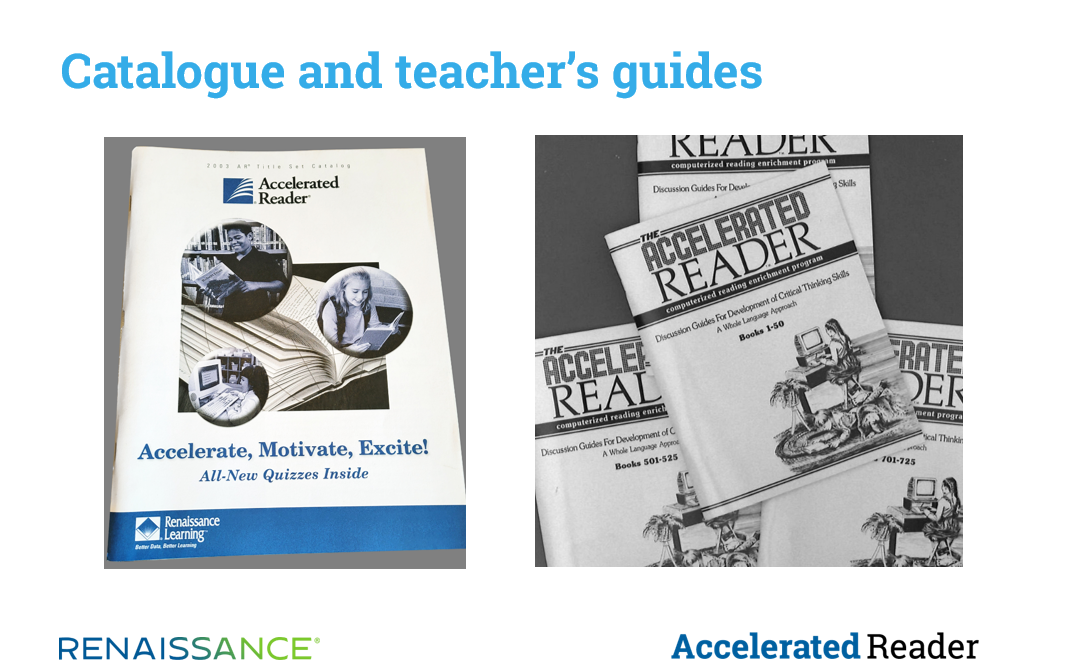
As a team, we have a lot of “lessons learned” over the years, and we have a comprehensive Writer Resource Guide we follow on best practices for AR quiz writing. We also regularly review and refresh existing quizzes. Take The Outsiders by S.E. Hinton as an example. This is still the most read print book in grade 8, according to our 2021 What Kids Are Reading data. Anyone who took the AR quiz 20 or 30 years ago would encounter some different questions today—which makes sense, given that educators approach this and other novels differently now than they did in the 1980s and 1990s.
Ali Good: Despite all the changes, we should note that the fundamentals of Accelerated Reader haven’t changed. As Judi says in the video, she had three goals when she created the program. First, to guide her children to books they’d find engaging, but to give them the final say in what they actually read. Second, to emphasize reading quality—to make sure they weren’t simply choosing the shortest, easiest books they could find. Third, to stress accountability, in the form of a short assessment of reading comprehension. Whether educators and students are using AR in the school building or in a virtual environment, these elements all apply today.
And it’s still the case—as Judi also notes in the video—that AR is just a tool, and that the relationship between educators and students is key to fostering a lifelong love of reading.
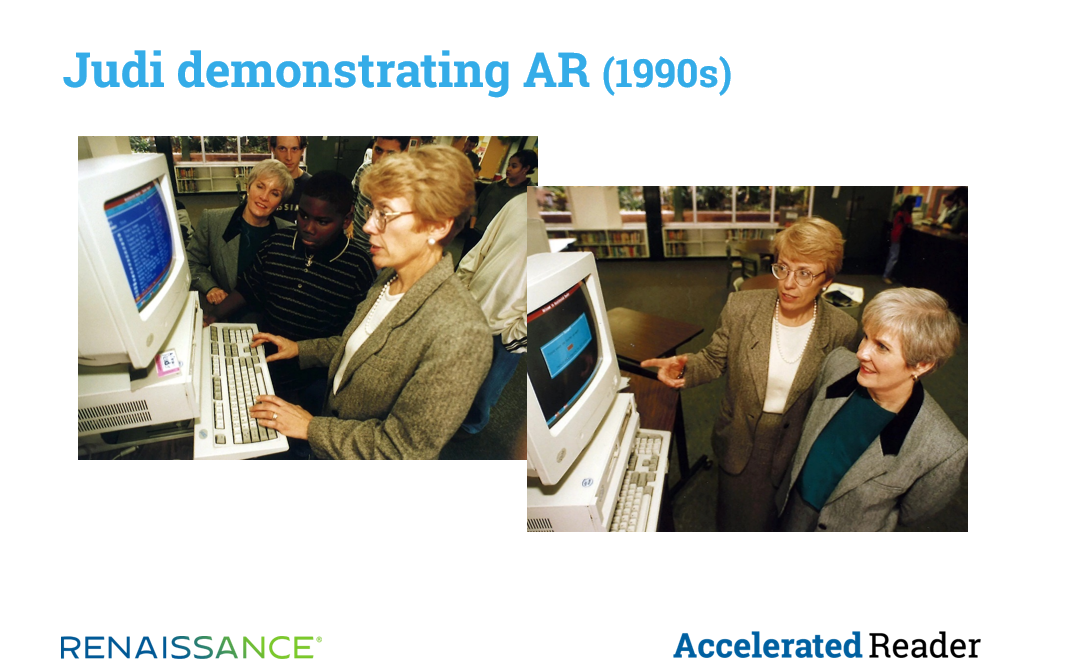
Q: How have books for children and young people changed since 1986?
Gene Kerns: Specific titles and authors have always been popular, from classics like Charlotte’s Web and The Secret Garden to the work of more contemporary writers like Judy Blume and Lois Lowry. However, I think the Harry Potter series was a game-changer—the first time you had a shared reading experience across an entire generation of kids.
Kristi Holck: For each of the Harry Potter books, someone from our team stood in line for the midnight book release and then spent the weekend writing the AR quiz, so it would be available the following week. As the movie adaptations were released, we revisited the quizzes to make sure they covered scenes and characters that didn’t make it into the movie—just so students weren’t tempted to skip the book!
Other changes that come to mind are the growing popularity of graphic novels, which weren’t on many students’ reading lists in 1986, and the increase in nonfiction that’s available for young people now. We’re also seeing more diversity in children’s books, in terms of both authors and subject matter, as well as more books that address social issues. Children obviously have questions about the world around them, and we now have a greater understanding of the role of reading in social-emotional learning, and in supporting diversity and inclusion.
Q: What else do we know about reading now that we didn’t know in 1986?
Gene Kerns: Back then, educators knew that students who read more had greater success in school and throughout their lives. Now, we have a better understanding of why this is the case. Research has shown, for example, that reading is critical for building vocabulary and background knowledge, and that background knowledge plays a greater role in comprehension than general reading ability does.
As Kristi noted, we also know that reading is important for social-emotional learning—that it builds empathy by helping students to “walk in someone else’s shoes.” It also helps students to think critically—to question what they’re seeing and hearing, to consider different ideas and viewpoints, and to seek out evidence to support or refute an argument.
In the video, Judi mentions that there were only 19 kids in her high school graduating class. When she arrived at the University of Iowa, she was surrounded by kids who’d attended large urban and suburban high schools and who’d taken classes that she’d never even heard of. But once her university courses started, she was able to hold her own. Because she’d been such an avid reader throughout her K–12 education, she’d connected with people and places and ideas through books that she wouldn’t otherwise have encountered. For her, reading literally made all the difference.
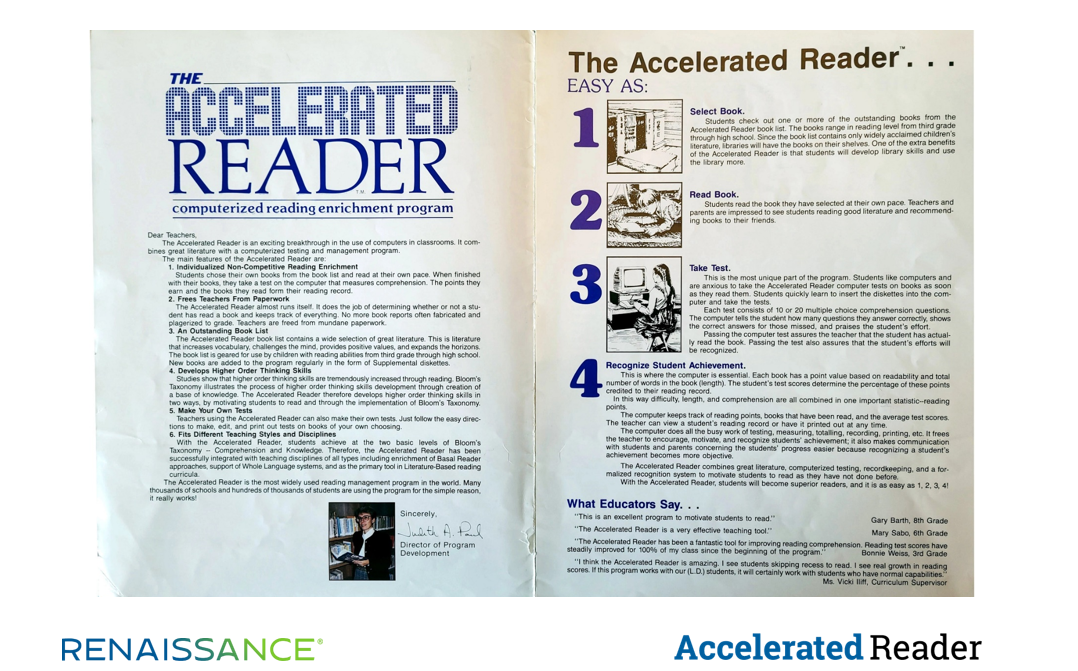
Q: What are your personal Accelerated Reader stories?
Kristi Holck: I lived in Minnesota in the 1990s, where my sons used AR in school. I remember that my second grader was determined to beat his reading goal for the year—and he read a wide variety of books that he otherwise wouldn’t have picked up.
When we moved to Wisconsin, I saw an employment ad in the local newspaper, from a company called Advantage Learning Systems. Strange as it sounds now, I didn’t immediately make the connection to Accelerated Reader. It was only when I decided to apply for the job that I realized—wait, I know them!
Gene Kerns: In the 1990s, I was using AR as an educator in Delaware. I was also writing my doctoral dissertation on the use of technology to support student learning. I wrote a letter to the company, asking if I could interview a few educators who were implementing AR with a high level of fidelity. About a week later, I got a phone call from Terry, inviting me to a dinner with AR users at an upcoming educational conference.
After we ate, I took out my notebook and started asking questions—and I remember that Judi and Terry were just as interested in the educators’ responses as I was. There was even a comic moment when the waiter, who was trying to serve the desserts, tried and failed to get Judi’s attention because she was listening to the educators so intently.
To be honest, I wasn’t looking for a job in edtech, but when I saw how passionate these teachers and librarians were about Accelerated Reader, and how committed Judi and Terry were to educators’ and students’ success, I realized they’d created something magical.
Ali Good: My AR story is connected to the first trip I took after I joined Renaissance. I struck up a conversation with the woman sitting next to me on the plane, who turned out to be a teacher. She told me that Accelerated Reader had had a major impact on both her students’ lives and her daughter’s life. In fact, her daughter had been a struggling/reluctant reader, and AR played an important role in helping to change this. Her daughter is now a literacy specialist who works with struggling/reluctant readers. I was really moved by this story, and at that moment, I realized I’d absolutely come to the right place.
Learn more
Looking for diverse books to engage your students? Check out the latest edition of What Kids Are Reading, the world’s largest annual study of K–12 student reading habits. And to see everything that today’s Accelerated Reader has to offer, click the button below.

